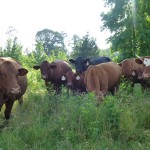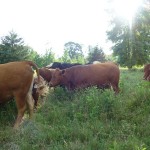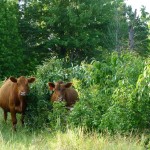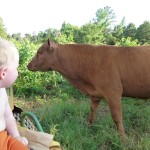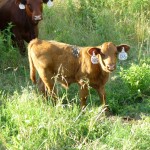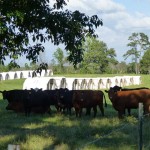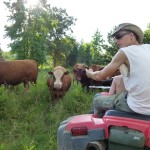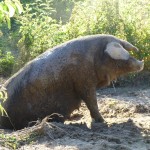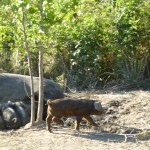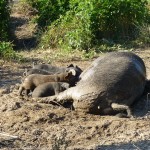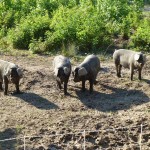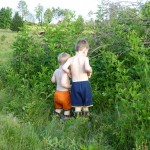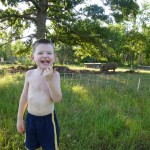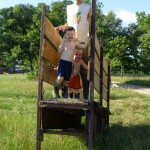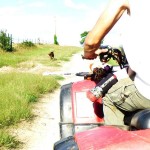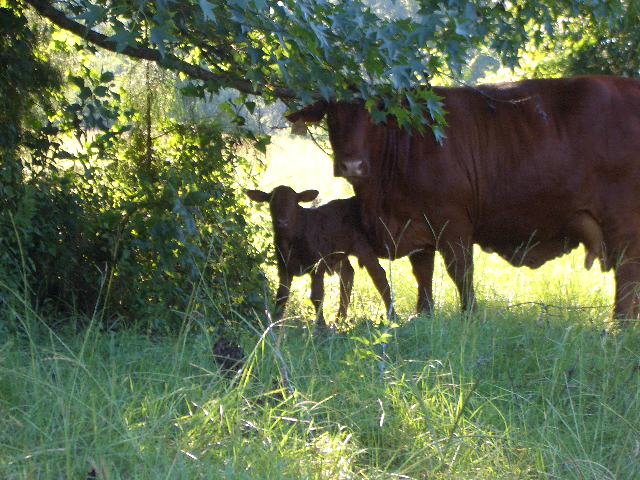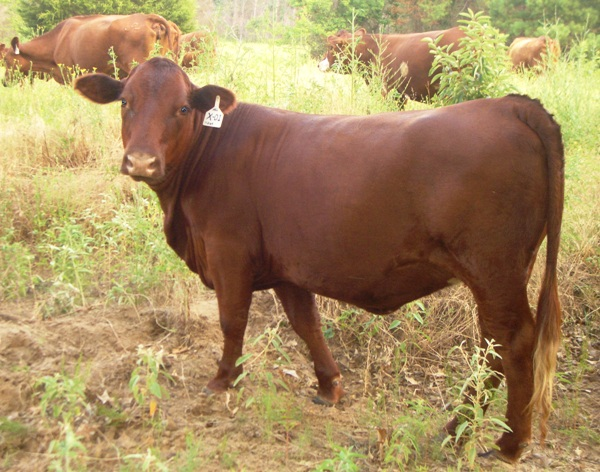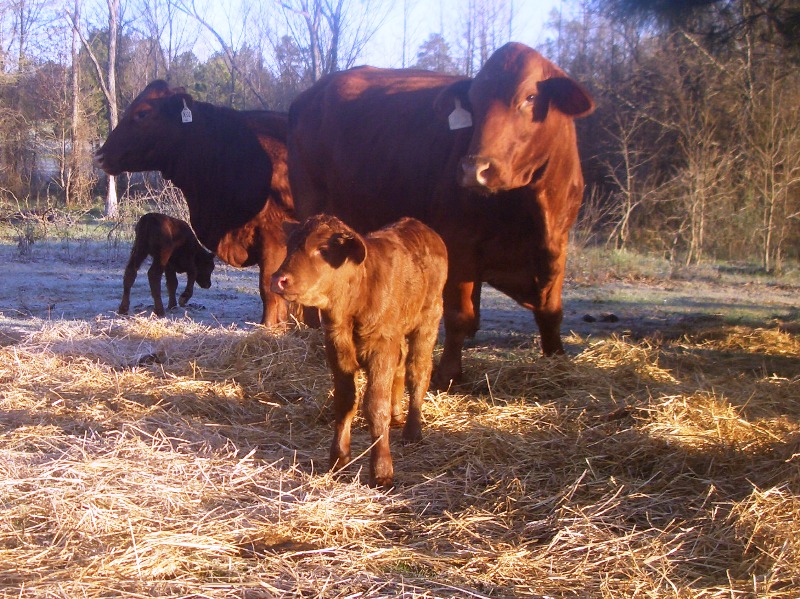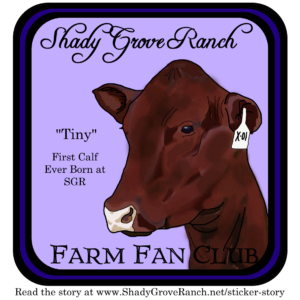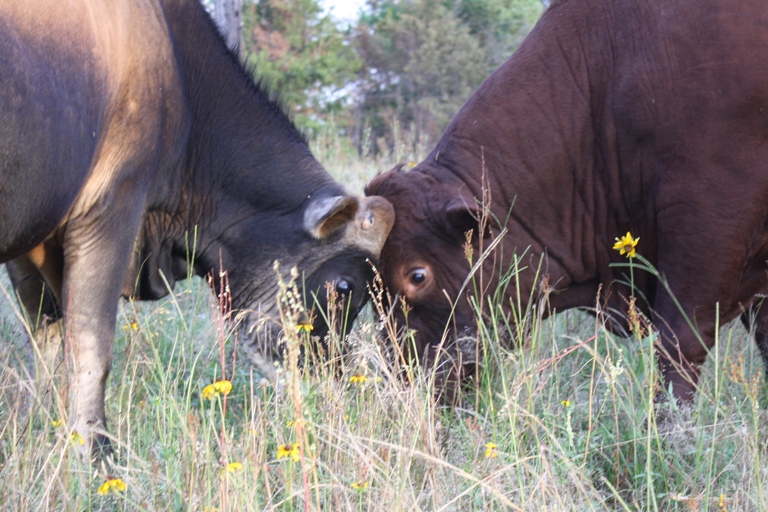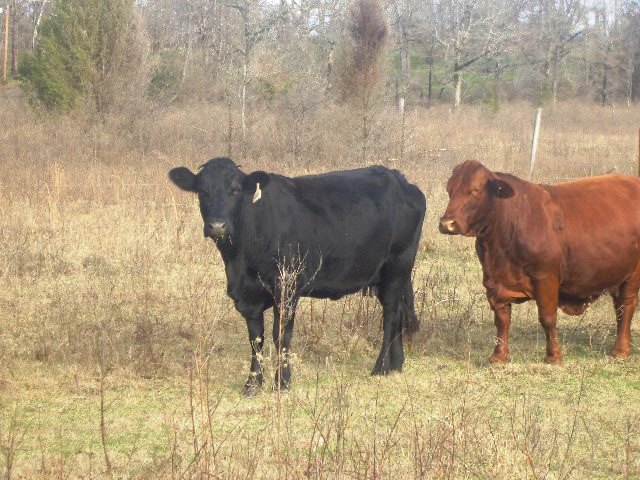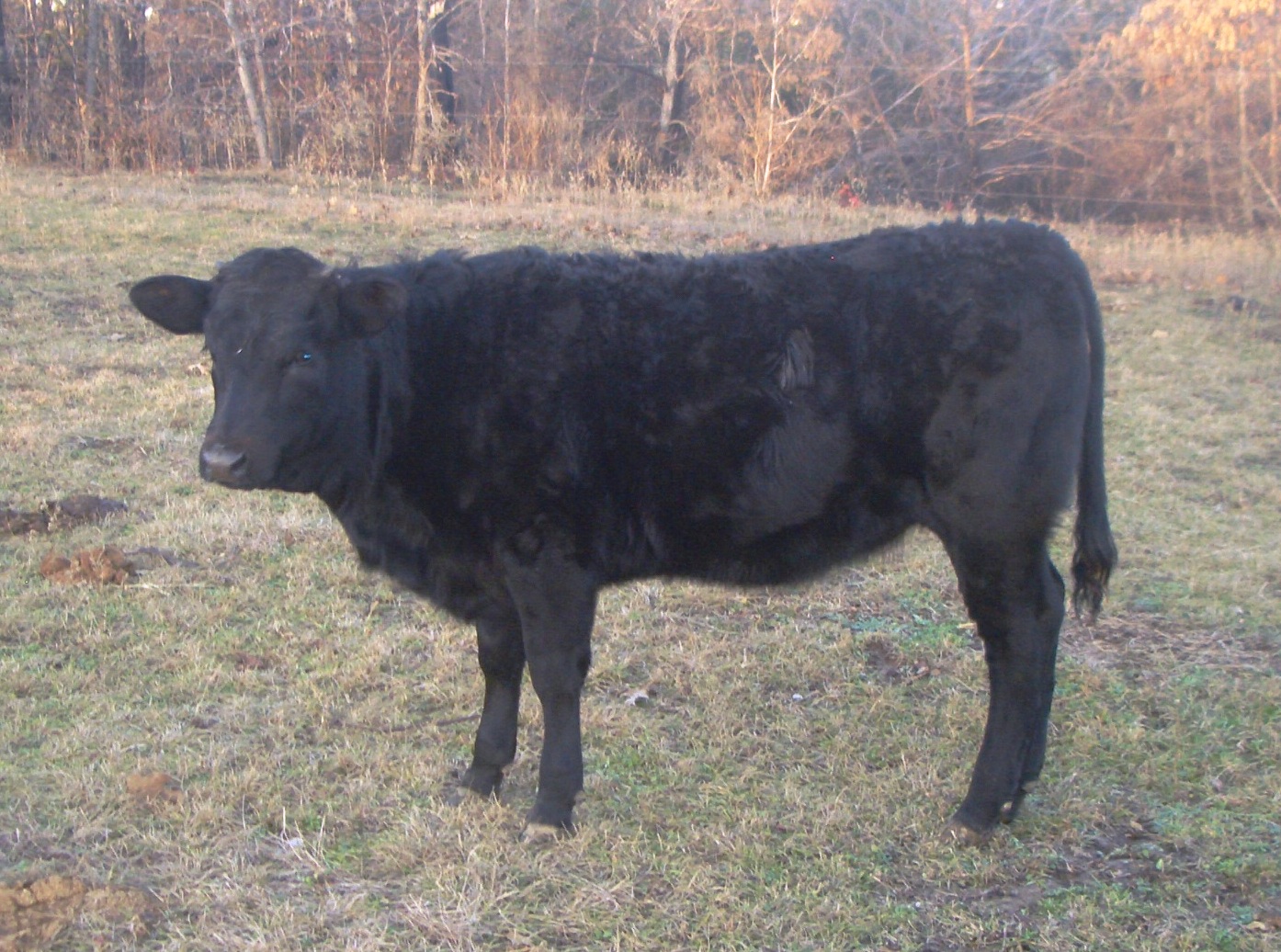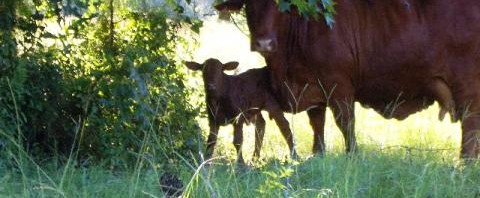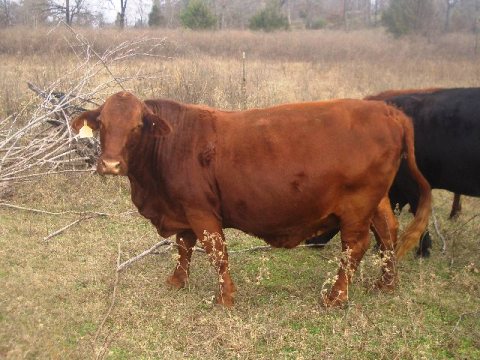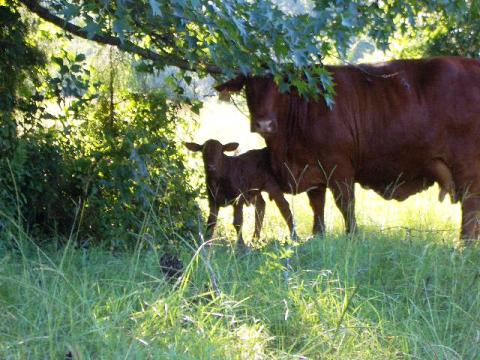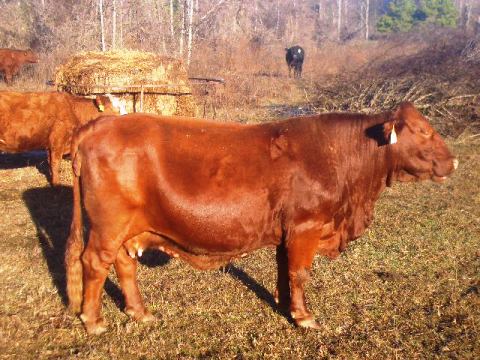We often get the question, “What breed of cows do you raise?” We never quite know how to answer because we have such a hodge-podge of breeds. Why is that? It is mostly because we have purchased breeding cows when we’ve had opportunities to obtain cows that display the physical characteristics coupled with a history of our style of husbandry that we know will produce great grass-fed beef here in our extreme East Texas climate. For us, phenotype is just as important as breed. We’ll never keep breeding a cow just because she’s a particular breed, nor would we buy a bull for that reason. There are plenty of cows within any breed that are not suitable for grass-based operations, and they should be the first on the hamburger list.
So we have lots of deep-bodied, well-fleshed Devons, Limousines, Angus, and South Poll, and of course, crosses of all of those. We’ve even got a couple of cows that have Jersey influence to get more milky offspring that raise nice fat, fast-growing calves. Every year we evaluate last year’s calf and momma cow’s condition and decide whether to breed her again or not. It doesn’t matter what breed she is, so long as she is producing healthy calves in our pasture management system.
We thought you might enjoy a photo update of our current beef herd. I couldn’t get all the cows in the pictures, but it’s a good cross-section. And there are some piggy and human pictures thrown in just for fun. Enjoy!
- Lots of happy mommas enjoying afternoon shade. Here you see Brangus, Angus, Limousine, Devon, and South Poll influence.
- Our rotationally-grazed pastures are getting better every year. This paddock is still recovering from the 2010-2013 drought.
- This Devon momma and her Devon yearling bull calf hunker down in the shrubs. Devons are known for their docility and milkiness. Clearly she has done a great job nursing this fellow!
- Here is our new (but young) herd sire, Big B. He is a nice, sleek South Poll cow known for fast growth and easy handling of hot and humid temperatures of the South.
- This little heifer is the second-born of the first calf ever born on Shady Grove Ranch. She is the daughter of a hodge-podge momma (which happens to be one of our best cows) and oru Devon bull. Soon she’ll learn to keep clear of the big cows’ rear ends.
- One group of females enjoy afternoon shade before going out to graze again. These gals are mostly Red and Black Angus.
- Here is our up-and-coming herd sire, Little G. He’s not quite mature enough for breeding, but getting close! He is a South Poll from a herd that grazes year-round and grows well on grass in Missouri.
- And now for some non-cow pictures. This momma pig rises up out of the cool mud to show us her wattles!
- This little pig has a fancy jacket!
- Nothing better than a drink of milk while resting in a cool mud puddle.
- Meet the future of bacon. These 4 little pigs are growing fast and will be ready later this year!
- Shevi and Axl hunt for dewberries together.
- Shevi found some dewberries during our Sunday afternoon family farm tour.
- Shevi shows us the pigs which are getting ready to transition to the woods for the summer.
- The Cad-men test out the new cattle loading chute.
- Toby the wonder-dog leads us home as Axl and his stuffed “Ras” ride with Daddy on the “show-wheel.”

